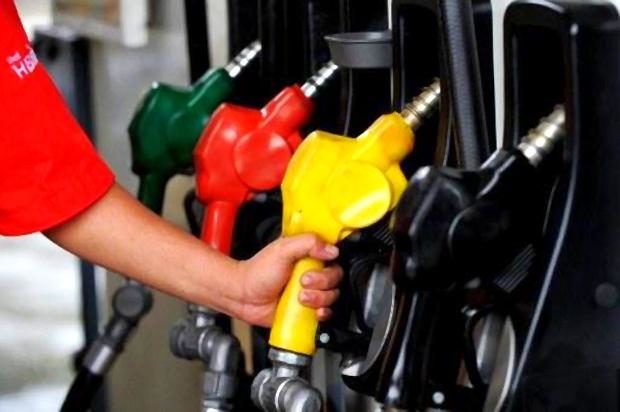Dominguez: 1.1B liters of fuel marked after paying correct taxes

MANILA, Philippines–The volume of oil products injected with the chemical signifying correctly paid excise taxes and import duties already breached the one-billion liter mark ahead of the fuel marking program’s full implementation next month, Finance Secretary Carlos G. Dominguez III said.
Dominguez told reporters Friday that to date, 1.1 billion liters of fuel were already marked.
The Bureau of Customs (BOC) last week said it had been programmed to collect P10 billon in additional revenues from the fuel marking program this year.
The Bureau of Internal Revenue (BIR), meanwhile, this month started to monitor gas stations’ inventory.
By Feb. 3, all retailed diesel, gasoline and kerosene were expected to be injected with a chemical marker serving as proof that the product had paid the proper customs duties (if imported) and other taxes (if refined locally).
The fuel marking program, which formed part of the revenue-generating measures under the Tax Reform for Acceleration and Inclusion (TRAIN) Act, was supposed to be implemented last year but was delayed.
Department of Finance (DOF) officials last year estimated the total volume of fuel needed to be marked to reach about 15.2 billion liters—6.8 billion liters for the BOC, and 8.4 billion liters for the BIR.
Under the joint fuel marking guidelines issued last year, the BOC leads fuel marking in depots, tank trucks, vessels, warehouses, and other fuel-transporting vehicles, while the BIR oversees testing in refineries, their attached depots, gasoline stations, and other retail outlets.
The fuel marking rules had granted the BOC and the BIR with deputization and police authority during field testing, such that when they found adulterated, diluted or unmarked petroleum, officers can not only seize these products but also arrest unscrupulous traders.
Fuel marking costs P0.06884 per liter, to be shouldered by the government during its first year of implementation.
SGS Philippines Inc. and Switzerland-based SICPA SA had been hired as marker providers under a five-year contract, which mandated their joint venture to produce and provide the ready-to-use official marker, as well as conduct actual marking in all taxable oil products nationwide.
SICPA and SGS executives had assured that their marker imported from Switzerland cannot be faked as they had a unique formulation for the Philippines.
The fuel marking program was aimed at combatting smuggling and misdeclaration to further raise the revenues of the BOC and the BIR—the country’s two biggest tax-collection agencies.
In 2016, foregone revenues from excise taxes and value-added tax (VAT) due to oil smuggling and misdeclaration amounted P26.9 billion, or more than half of the actual P52.6 billion collected by the BOC and the BIR that year.
The Manila-based multilateral lender Asian Development Bank had a higher estimate of P37.5 billion in foregone tax revenues annually from oil smuggling, while a separate study commissioned by local oil industry players had pegged revenue losses to as much as P43.8 billion yearly.
